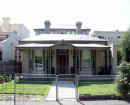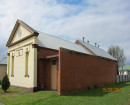PORTLAND BOTANICAL GARDENS
1 GLENELG STREET PORTLAND, GLENELG SHIRE
-
Add to tour
You must log in to do that.
-
Share
-
Shortlist place
You must log in to do that.
- Download report
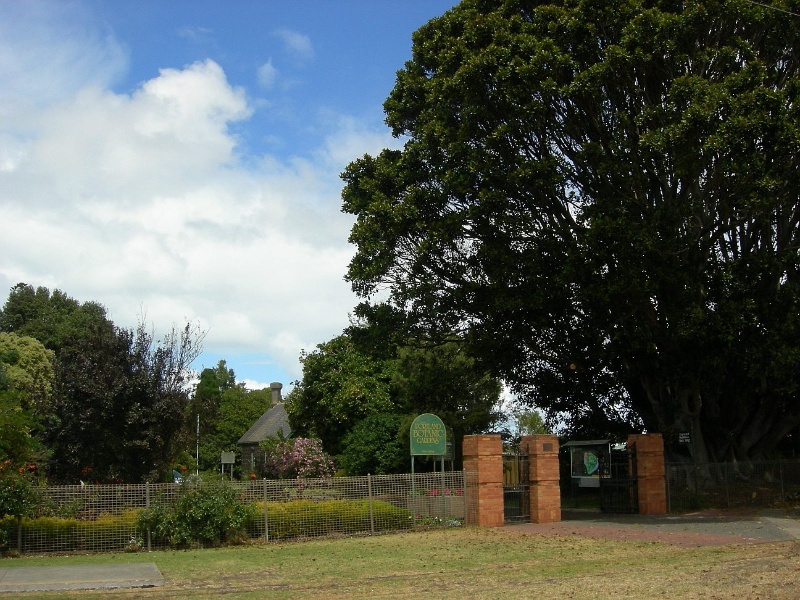


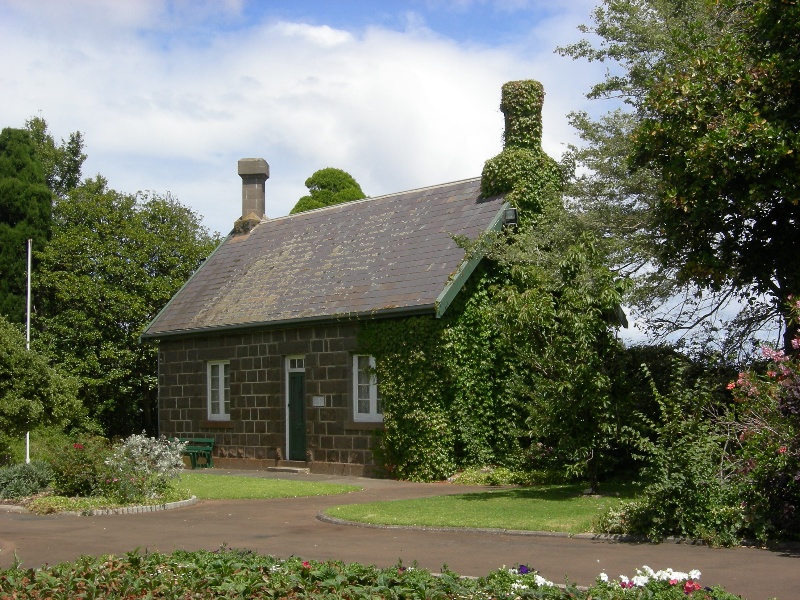
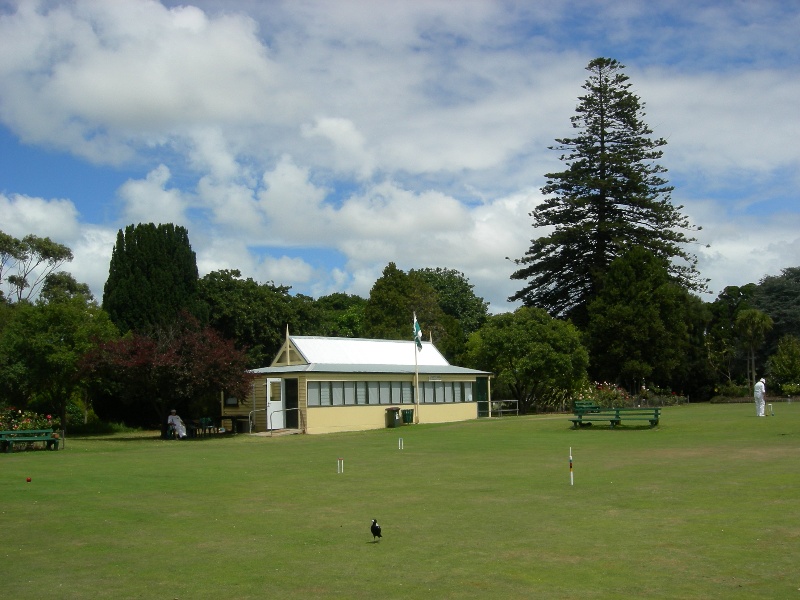
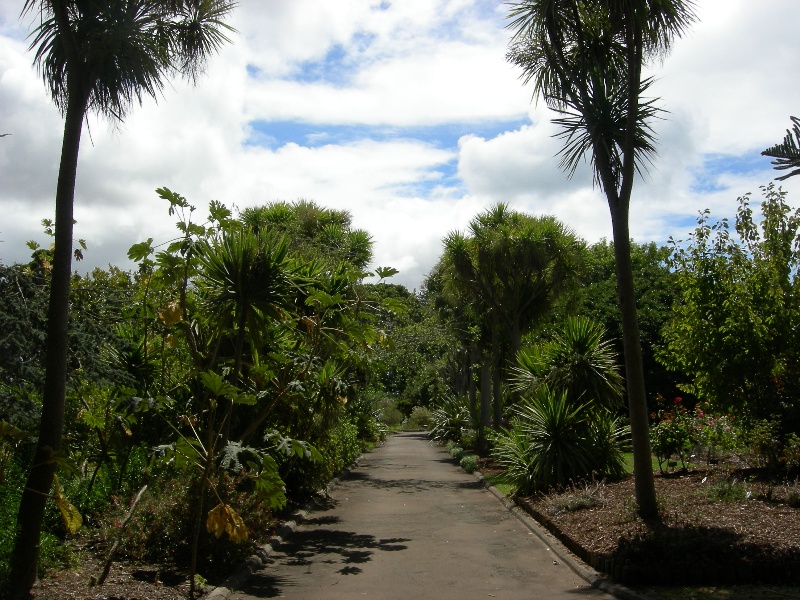
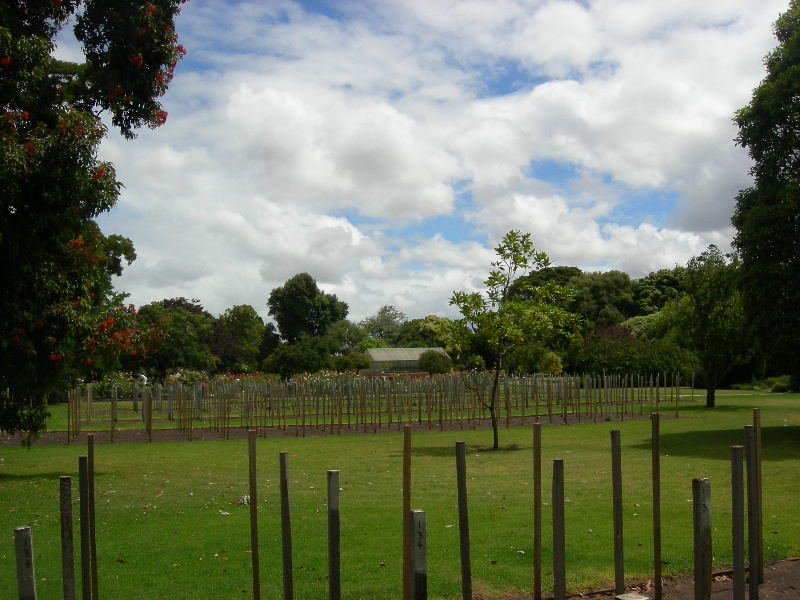
Statement of Significance
What is significant?
Portland Botanic Gardens are one of the earliest regional botanic gardens in Victoria. The original 13 hectare site (32 acres) was reserved in 1851 but not developed until 1858 when William Allitt began implementing a plan designed by Alexander Elliott.
The Portland Botanic Gardens occupy the eastern section of Henty Park which was named in the 1965 re-reservation following canal works to the south. Henty Park comprises three principal areas: the Botanic Gardens (3.25 hectares), the swimming pool complex (1.4 hectares) and the balance of the park (8.2 hectares) which includes recreation areas such as the oval, tennis complex, swimming centre, former show and camping grounds and the cable tram depot.
The Botanic Gardens are bounded by Glenelg Street and Cliff Street to the north, the canal to the east and south and by the oval and tennis courts in Henty Park to the west. The design and layout is unusual for a botanic garden as it is based on the traditional squared formal layout of experimental and systematic gardens, and the central path and curving perimeter walks have largely remained unchanged since the 1860s.
The main entrance gates to the Gardens are in Glenelg Street past the former picturesque curator's basalt cottage constructed in 1859 which faces the main north-south path lined with Cordylines. To the west is the Cedar lawn. The path continues to loop to the east and north enclosing the croquet lawns first established in 1868, the clubhouse built in 1912 and a glasshouse c1980, with extensive beds of roses in the western half and dahlias in the eastern half. This area forms the nucleus of the earliest section of the Gardens. To the south is the large triangular native garden lawn, which was originally part of the swampy land on the banks of Salt Creek. A path constructed in the 1960s follows the canal along the southern boundary linking into the path which curves back to the main entrance.
The Portland Botanic Gardens contain a number of rare plants including Wigandia caracasana, Rhus viminalis (African Sumac), Buddleya lindleyana (Butterfly Bush), Azara integrifolia, Erythrina caffra (South African Coral Tree), Crataegus 'Smithiana' ,Ceanothus pinetorum, and the largest known example of Cordyline australis (New Zealand Cabbage Tree) in Victoria. The garden has a collection of 300 different varieties of roses and 170 varieties of dahlias of which 1,300 are bedded annually.
The Council nursery is located adjacent to the gardens and contains glass and shade houses in which plants are cultivated for use in the Botanic Gardens and other Council gardens.
How is it significant?
Portland Botanic Gardens are of historical, scientific (botanical), and aesthetic significance to the State of Victoria.
Why is it significant?
The Portland Botanic Gardens, established in 1851, are historically significant as one of the earliest regional botanic gardens, being the third oldest in Victoria. Botanic Gardens were established in Melbourne in 1846 and Geelong in 1851.
The former curator's cottage constructed of basalt in 1859 is historically significant as one of the oldest garden buildings in Victoria only predated by the Gardener's Cottage (1850) and the Director's Residence (1854) in the Melbourne Botanic Gardens, and is a rare, intact example of the simple picturesque building type.
Of historical significance is the association with Alexander Elliott as designer and William Allitt as inaugural curator. Both were British emigrants with considerable horticultural and landscape design experience with Elliott going on to become long-time head gardener at the University of Melbourne. The involvement of the Henty brothers from their nearby property 'Burswood' (VHR H0240) is of historical significance, particularly Edward Henty, who was a keen plantsman and, early member of the Gardens Committee who propagated and arranged plant exchanges for the Gardens. The Gardens have a strong historical significance with the game of croquet which has been played continuously on the current site since 1868.
The Portland Botanic Gardens are of scientific (botanical) significance for the collection of plants characteristic of late nineteenth century Victorian gardens which includes plantings of specimen and some rare and important species such as Wigandia caracasana, Rhus viminalis Cordyline australis Ceanothus pinetorum, Buddleya lindleyana Erythrina caffra Crataegus 'Smithiana' and an Azara integrifolia. The Gardens include a wide range of plants selected for botanical interest, areas of intense horticulture such as floral displays of roses and dahlias dating back to 1857, a range of horticultural environments, including a glasshouse and a documented supply of plants from other botanic gardens and horticulturalists.
The Portland Botanic Gardens are of aesthetic significance for the design and layout which is reflected in the largely extant path system and placement of major features such as the curator's cottage, croquet lawn and club house and the glasshouse. The design is unusual as it is based on the squared layout of traditional experimental/trial grounds and systematic gardens, and is both befitting this type of garden and rare in Victoria, also only occurring at Geelong Botanic Gardens.
The contrast between the formal area with the serpentine paths, lawn areas and vistas with prominent trees including Ficus macrocarpa (Moreton Bay Fig), Cedrus atlantica f. glauca (Blue Atlas Cedar), Araucaria heterophylla (Norfolk Island Pine) Fagus sylvatica f. purpurea (Copper Beech) and an avenue of Coryline australis are of aesthetic significance. The location of the Gardens adjacent to the closely settled township of Portland with its many extant colonial government buildings, reserves and close proximity to the sea, is also of aesthetic significance.
-
-
PORTLAND BOTANICAL GARDENS - History
References:
The following history relies largely on the 2004 Conservation Management Plan detailed below:
'Portland Botanic Gardens: Conservation Management Plan and Landscape Master Plan', by Richard Aitken Pty Ltd in association with Lee Andrews and Helen Doyle, South Yarra, Vic., 2004.
Other sources
Historic information obtained chiefly from files of National Trust noted in R. Aitken, Historic Gardens in Victoria, 1998
R. Aitken, Historic Gardens in Victoria, 1998; Historic Places South-Western Victoria 1997; Historic archaeological sites in the Portland area, Eslick, C., 1983, OCCASIONAL REPORT 10;
National Trust Classification Report G13020 - Portland Botanic Gardens
P Watts, Historic Gardens of Victoria, 1983, Oxford University Press.
CONTEXTUAL HISTORY
From the mid nineteenth century, fuelled by the gold rush and colonial government polices, Victoria developed a tradition of municipal botanic gardens in many of the larger country towns. This resulted in Victoria having the finest collection of regional botanical gardens of all Australian states. Portland Botanic Gardens is the third oldest botanic gardens set aside in the Port Phillip District of New South Wales, the earlier ones being located in Melbourne and Geelong.
Most of the regional botanic gardens developed as landscaped gardens, although there was a sharp contrast between these sites and the various municipal parks and gardens where an emphasis on floral displays and ornamentation tended to dominate, especially in the twentieth century.
HISTORY OF PLACE
In the early 1800s whaling and sealing parties working in Bass Strait first camped in the relative shelter of Portland Bay. The rich fishing grounds attracted the attention of the settlers in Van Diemen's land who, feeling frustrated by the end of the land grant system in that colony, were in search of new pastures. The well resourced Henty family, who were already involved in whaling, decided to make the move with Edward Henty landing in Portland on 19 November 1834. In 1836 the government authorities in New South Wales declared the whole area south of the Murray River as the Port Phillip District of the Colony of New South Wales which opened the way for more settlers at Portland Bay.
The Botanic Gardens Reserve site may have been set aside as early as 1851. It is thought that Superintendent CJ La Trobe chose the site as he was very supportive of botanic gardens and is known to have made a number of visits to the area in the 1840s. He had previously selected the sites for botanic gardens in Melbourne (1846) and Geelong (1851).
By 1853 part of the site (where the curator's cottage now stands) was being used as the Pound Paddock and by December that year, the Botanic Gardens Reserve appeared in Surveyor F. W. Birmingham's map. A public meeting was held on 10 February 1854, to establish the Botanic Gardens and a committee formed to manage the early steps, supported by a grant of £500 approved by the legislature. At this stage the Botanic Gardens site was not shown on the township plans, but labelled part of 'suburban lands' surrounding the township sections. In 1855, a 'Reserve for Botanic Gardens' comprising sections, 31, 32 and 33 bounded by Glenelg Street, Bentinck Street and Salt Creek was shown on the township plan (Township of Portland, 16 June 1855).
Site
The actual site, whilst situated within the town grid, was far enough from the town centre to be an appealing area for recreation. The natural setting, with the creek and lagoon, the slope of the land and the proximity to the sea, was seen to greatly advantage the development of a garden on the site.
Layout
In September 1857 the committee wrote to the curator of the Melbourne Botanic Gardens, Ferdinand Mueller, 'requesting him to send down a man to superintend laying out the ground - to be engaged for 14 days'. Alexander Elliot was appointed for the task and drew up a plan. (Other records claim that Elliot's plan won a competition seeking 'the best set of plans for the contemplated Botanical Gardens at Portland.') Elliot presumably visited the site in October or November, and marked out the paths in accordance with this plan. It is possible that Mueller, who had visited Portland a number of times and was presumably familiar with the site, assisted him in drafting the plan. In December 1857 the Council recorded 'their appreciation of the manner in which the Botanical Gardens has been laid out under the superintendence of Mr Elliot'. He returned to the Melbourne Botanic Gardens where he remained until 1861 when he was appointed curator of the gardens at Melbourne University. The original plan by Elliot has not survived.
In June 1858 the Council appointed William Allitt, an Irish born nurseryman who had trained in England, to lay out the garden. Years later in a letter to the Portland Guardian of 5 May 1893, William Allitt claimed to have found 'a bush of gum stumps and a paddock of ferns' on the site when he began work at the site in 1857.
Curator's cottage
In July 1958 tenders were called for the design of a curator's cottage which would allow for future extension. The design has been attributed to the municipal surveyor, A. M. Ross and follows a 'picturesque style 'with casement windows, rusticated stone quoins and massive chimneys'. William Fraser completed the carpentry and the stonemason is thought to have been John Jones. It is one of the earliest gardens buildings in Victoria.
Early planting
The Portland Botanic Gardens were initially stocked with whatever could be obtained though plant exchanges with other gardens. Mueller sent cuttings and established plants and seeds from the Melbourne Botanic Gardens to assist in the establishment of the Gardens. Plants were also requested from the Royal Society's gardens, in Hobart through the Henty family's links. Correspondence between Francis Henty and the Royal Society indicated that a collection of native plants, amongst other plantings was proposed. The Henty's by this time living at Burswood (VHR H0240) also made contributions through Edward's plant collecting and plant exchange activities with Edward being an early member of the Garden's committee member.
Initially plants were reported to have been arranged according to their botanical categories which reflects Mueller's influence on Elliot and Allitt's botanical interests which appear to have taken precedence over aesthetics in landscape design. In the Portland Guardian of 5 May 1859, he claimed to have planted 'twenty-five natural orders of plants..represented in their respective positions" and that the following year all the plants had been named". Allitt was also a very keen collector and propagator of native plants and collected seeds and cuttings to establish a collection of plants from the colony.
By 1859 the gardens were open everyday with the beds reported to be well stocked and paths cleared. Allitt took up residence in the cottage in the Gardens and a further grant of £300 was obtained from the Government. At this time the Volunteer Rifle Corps Band performed in the Gardens which became a regular event. In May 1859, the Municipal Council recommended a committee be appointed to manage the Gardens.
Developments in the 1860s - 1880s
In the 1860s, the garden beds and paths were constructed partly using illegal the labour of Chinese immigrants being held as prisoners in the local gaol.By this period, beside the ten acre section that had been laid out and planted, the western section, although part of Elliot's plan for the entire site, was not yet started presumably due to lack of funds. It remained a paddock through the 1870s.
In 1864 a statue of 'Cupid and Psyche' a gift from GC Levy, MLA to the town was erected in the Gardens but its later fate is unknown.
By 1866, at the end of Allitt's curatorship, he claimed to have planted 2000 species including 700 trees and a nursery had been established near the cottage for his propagating activities.
Henry Hedges replaced William Allitt as the curator when he refused to work for a reduced salary which the Portland Borough Council tried to justify by arguing that, now Elliot's plan was largely implemented, his job was less demanding. It is likely Allitt maintained links with the gardens as he continued to live in the area and operate a small nursery at Tyrendarra. Hedges had also trained in Britain and was responsible for the design of the botanic gardens at Port Fairy his strength being landscape design.
His greatest achievement was the development of the low swampy area at the south end of the botanic gardens reserve into a network of lakes and small islands. The most extensive development of this area took place from 1878, with prisoners used to undertake the work. In 1882 two small footbridges were also constructed in this area.
In keeping with a great interest in acclimatisation in many botanic gardens, Portland had a small collection of animals in the 1860s. These included Axis deer, birds, kangaroos, emus and were housed in the zoo in an area south of the cottage and operated until the 1950s.
Croquet lawns were laid out in 1868 not long after the game had gained popularity in the colonies. Tennis was introduced into Australia in the late 1870s and was first played in the gardens at this time on a lawn shared with croquet players. A new tennis court was laid out in 1883.
The summer house to provide shelter for visitors was constructed in 1869 by converting a shed formerly used for the Axis deer but was removed by 1891.
The majority of the work in the 1870s and 1880s related to maintenance activities particularly relating to the increasingly elaborate design and plant collection.
It is surprising that there was still no formal reservation of the site until this period. Accordingly on 26 June 1876 an area of 50 acres was reserved temporarily being allotments 30, 31, 32 bounded by Bentinck and Glenelg Streets and Salt Creek. The temporary reservation was made permanent on 16 October 1876.
In 1884 the curator Henry Hedges was removed for poor work and insolence, and was replaced by Joseph Couch. By this time the gardens were well established and popular feature of Portland for both local residents and tourists. In 1885 the southern section of the curator's cottage was erected at considerable expense.
The Portland Public Band was inaugurated in July 1888. Despite previous attempts to raise funds to erect a band pavilion in Portland, concerts were reported to have been held in the Botanic Gardens on a flat platform and in the rotunda on the foreshore. It is believed that a should shell was constructed in the Gardens during the 1950s and 1960s but was later removed.
The gardens suffered somewhat in the 1890s when Council funding was cut in response to the depression and Couch was required to accept a reduction in salary. In 1897 tenders were called for the erection of two weatherboard rooms at the rear of the curator's cottage.1900s
A pavilion was erected beside the court around 1907 and shared with the newly former Croquet club from 1910. It was replaced with a new building in 1912.
In about 1907 the newly formed Portland Pastoral and Agricultural Society started work to develop the swampy western side of the botanic gardens reserve, known as Henty Park, into showgrounds. The first show was held on the site on 12 February 1908. The shows were held on this site until 1994, before establishment of new showgrounds at Yarraman Park.
A new curator, William Sturchberry, was appointed in 1910. He oversaw a number of changes to the reserve to make the gardens more amenable to tourists such as new seating. In 1915-16 the lifeboat used in the rescue of the Admella shipwreck in 1859 became redundant and was displayed in the Gardens for its historical and novelty value. A timber shelter was erected for it in 1937. As the shelter fell into disrepair, it was decided in 1990 to relocate it to a more appropriate location with proper protection. The shelter was demolished.A cannon that was located just inside the main gate c1910 was a popular feature but was later relocated to the Returned Services League rooms in Must Street.
In the late 1920s the debate about whether camping should be allowed in Henty Park commenced. It also raised the issue that the reserve was being used for a number of activities that did not comply with the uses of a Botanic Gardens reserve, including tennis, croquet, golf and show grounds. This resulted in the removal of the tennis courts to the far eastern end of the gardens where three courts were constructed. No official action was taken at this time.
This second location was cut off from the Gardens by the later canal construction so the tennis courts and pavilion were demolished around 1967 and facilities were transferred to a superior location in Henty Park.
Presumably the Croquet club gained exclusive use of the area previously taken up by the 'cemented' tennis court as well as the newly vacated tennis pavilion
In 1884 the curator Henry Hedges was removed for poor work and insolence, and was replaced by Joseph Couch. By this time the gardens were well established and popular feature of Portland for both local residents and tourists. In 1885 the southern section of the curator's cottage was erected at considerable expense.
The Portland Public Band was inaugurated in July 1888. Despite previous attempts to raise funds to erect a band pavilion in Portland, concerts were reported to have been held in the Botanic Gardens on a flat platform and in the rotunda on the foreshore. It is believed that a should shell was constructed in the Gardens during the 1950s and 1960s but was later removed.
The gardens suffered somewhat in the 1890s when Council funding was cut in response to the depression and Couch was required to accept a reduction in salary. In 1897 tenders were called for the erection of two weatherboard rooms at the rear of the curator's cottage.1900s
A pavilion was erected beside the court around 1907 and shared with the newly former Croquet club from 1910. It was replaced with a new building in 1912.
In about 1907 the newly formed Portland Pastoral and Agricultural Society started work to develop the swampy western side of the botanic gardens reserve, known as Henty Park, into showgrounds. The first show was held on the site on 12 February 1908. The shows were held on this site until 1994, before establishment of new showgrounds at Yarraman Park.
A new curator, William Sturchberry, was appointed in 1910. He oversaw a number of changes to the reserve to make the gardens more amenable to tourists such as new seating. In 1915-16 the lifeboat used in the rescue of the Admella shipwreck in 1859 became redundant and was displayed in the Gardens for its historical and novelty value. A timber shelter was erected for it in 1937. As the shelter fell into disrepair, it was decided in 1990 to relocate it to a more appropriate location with proper protection. The shelter was demolished.A cannon that was located just inside the main gate c1910 was a popular feature but was later relocated to the Returned Services League rooms in Must Street.
In the late 1920s the debate about whether camping should be allowed in Henty Park commenced. It also raised the issue that the reserve was being used for a number of activities that did not comply with the uses of a Botanic Gardens reserve, including tennis, croquet, golf and show grounds. This resulted in the removal of the tennis courts to the far eastern end of the gardens where three courts were constructed. No official action was taken at this time.
This second location was cut off from the Gardens by the later canal construction so the tennis courts and pavilion were demolished around 1967 and facilities were transferred to a superior location in Henty Park.
Presumably the Croquet club gained exclusive use of the area previously taken up by the 'cemented' tennis court as well as the newly vacated tennis pavilion
1920s-1980s
By the 1920s the Botanic Gardens had become an established mature garden with a rich and diverse collection of plants and a number of ornamental features such as archways and arbours. In 1922 Andrew Callander replaced William Sturchberry as curator.The introduction of the railway had an adverse effect on freight traffic at the port of Portland and resulted in the local economy suffering. Also the growing popularity of the motor car saw driving holidays start to take over from railway tourism for wealthier travellers. The debate about whether to allow camping in the western section of the botanic gardens reserve also raised confusion about the existence of a committee of management responsible for the reserve.
An Anzac Day floral display was inaugurated in 1935. Flowers were grown especially for this purpose in the botanic gardens and elsewhere with a special emphasis on Dahlias. In the 1940s Portland continued to be a popular summer holiday destination including the Botanic Gardens for shady respite.
In 1949 Gilbert Pritchard replaced Andrew Callander as the new curator of the botanic gardens with responsibility for all parks and reserves within the town. He was the last curator to reside in the cottage which was later restored and reopened to the public in November 1965. His term co-incided with some major changes in the gardens including the use of Henty Park for caravans over the holiday period, the loss of the islands and conversion of Salt Creek to a canal in the late 1950s. In 1952 the current ornamental main entrance gates replaced the earlier wrought iron gates which had been in place since the early 1860s.
In 1955 an area of 18 acres and 20 perches was excised from the southern section of the botanic gardens and Henty Park for use by the Portland Harbour Trust. This facilitated works to straighten Salt Creek and convert it to a canal opening into the sea resulting in the loss of the swampy area which Hedges had converted into ponds and islands. The new canal became the southern and eastern boundary to the Gardens in much the same way as Saltwater Creek had been for the previous century. The newly enlarged port was officially opened on Henty Day 19 November 1960.
In 1965, the reservation purpose was changed from 'Botanic Gardens' to 'Botanic gardens and park and recreation reserve' which reflected the decline in interest on the botanical features of the gardens with more emphasis on facilities and uses.
A swimming pool complex was established in Henty Park in c1975 and the facilities extended further in 1990s.1980-Present
In 1982 Colin Ellingworth replaced Gilbert Pritchard as curator and was responsible for the creation of a large native garden area. He also extended the rose beds and added a large number of Dahlia beds. The Memorial Glasshouse (c1980s) is noted to have been used by Ellingworth and continues to be used for annuals but is kept locked for security reasons as in 1993.
Whilst the 1980s saw a general decline in interest in the botanic gardens and limited resources for maintenance, the gardens did play a part in Victoria's sesquicentenary celebrations as funding was obtained to reinstate the Cordyline Walk along the main north south walk. In 1987 Allan Hyder became the new curator after which a Council restructure revoked the role.
In 1991 the Portland City Council applied to subdivide the recreational portion of Henty Park from the botanic gardens 'to facilitate future development of recreational facilities'.
Controversy erupted in 1996 over a proposal to put a tourist cable tram through the botanic gardens. After much debate the tramway was built around the boundary of the reserve. Another proposed development the same year was for a mineral spa development in Henty Park. Like the tramway, this proposal highlighted the need to protect the gardens as a historic site. The Friends of the Botanic Gardens was established c.2000
In 2001 the Portland Botanic Gardens celebrated its sesquicentenary with Glenelg Shire Council commissioning a Conservation Management Plan in 2002 which was completed in 2004. Repairs works were also carried out the main entrance gates in 2004.
In March 2009 major redevelopment works were officially opened which involved the demolition of five old asbestos buildings and two storage areas. The works included a new lunch room, two large sheds, two small sheds, two storage areas including winter storage for over 2000 dahlia tubers and a new garden bed.
Demolished Buildings and Structures
Despite Portland Botanic Garden's long history, there are relatively few demolished buildings and structures. These fall into three categories:1) embellishments (eg the statue of Cupid and Psyche, summerhouse, cannon and lifeboat);
2) major landscape design feature (eg islands and bridges); and
3) Items relating to past uses (eg zoological section, tennis courts, band platform)
PORTLAND BOTANICAL GARDENS - Assessment Against Criteria
a. Importance to the course, or pattern, of Victoria's cultural history
The Portland Botanic Gardens are the third oldest regional botanic gardens in Victoria after the Melbourne Botanic Gardens (1846) and Geelong Botanic Gardens (earlier in 1851). First surveyed in 1851, worked commenced in 1858 when William Allitt began implementing a plan designed by Alexander Elliot.
b. Possession of uncommon, rare or endangered aspects of Victoria's cultural history.
The Portland Botanic Gardens are important for the collection of plants characteristic of nineteenth and early twentieth century Victorian gardens, as well as representative of more specialised plant groups befitting the scientific role of a botanic garden. The planting includes many rare and uncommon specimens now often only found in botanic gardens or historic landscapes.
c. Potential to yield information that will contribute to an understanding of Victoria's cultural history.
The Portland Botanic Gardens are important as one of the earliest and most intact examples of a nineteenth century in regional botanic garden in Victoria.
d. Importance in demonstrating the principal characteristics of a class of cultural places or environments.
e. Importance in exhibiting particular aesthetic characteristics.
The Portland Botanic Gardens are of aesthetic significance for the design and layout which is reflected in the largely extant path system and placement of major features such as the curator's cottage, croquet lawn and club house and the glasshouse. The design is unusual as it is based on the squared layout of traditional experimental/trial grounds and systematic gardens, and is both befitting for this type of garden and rare in Victoria. The contrast between this formal area with the serpentine paths, lawn areas and vistas within the gardens are of aesthetic significance. The location of the Gardens adjacent to the closely settled township of Portland with its many extant colonial government buildings, reserves and close proximity to the sea, is also of aesthetic significance.
f. Importance in demonstrating a high degree of creative or technical achievement at a particular period.
g. Strong or special association with a particular community or cultural group for social, cultural or spiritual reasons. This includes the significance of a place to Indigenous peoples as part of their continuing and developing cultural traditions.
h. Special association with the life or works of a person, or group of persons, of importance in Victoria's history.
PORTLAND BOTANICAL GARDENS - Plaque Citation
Reserved in 1851 and developed from 1858 to a design by Alexander Elliott, this is one of the oldest regional botanic gardens in Victoria, and contains a plant collection typical of late nineteenth century botanic gardens.
PORTLAND BOTANICAL GARDENS - Permit Exemptions
General Exemptions:General exemptions apply to all places and objects included in the Victorian Heritage Register (VHR). General exemptions have been designed to allow everyday activities, maintenance and changes to your property, which don’t harm its cultural heritage significance, to proceed without the need to obtain approvals under the Heritage Act 2017.Places of worship: In some circumstances, you can alter a place of worship to accommodate religious practices without a permit, but you must notify the Executive Director of Heritage Victoria before you start the works or activities at least 20 business days before the works or activities are to commence.Subdivision/consolidation: Permit exemptions exist for some subdivisions and consolidations. If the subdivision or consolidation is in accordance with a planning permit granted under Part 4 of the Planning and Environment Act 1987 and the application for the planning permit was referred to the Executive Director of Heritage Victoria as a determining referral authority, a permit is not required.Specific exemptions may also apply to your registered place or object. If applicable, these are listed below. Specific exemptions are tailored to the conservation and management needs of an individual registered place or object and set out works and activities that are exempt from the requirements of a permit. Specific exemptions prevail if they conflict with general exemptions. Find out more about heritage permit exemptions here.Specific Exemptions:General Conditions: 1. All exempted alterations are to be planned and carried out in a manner which prevents damage to the fabric of the registered place or object.
General Conditions: 2. Should it become apparent during further inspection or the carrying out of alterations that original or previously hidden or inaccessible details of the place or object are revealed which relate to the significance of the place or object, then the exemption covering such alteration shall cease and the Executive Director shall be notified as soon as possible.
General Conditions: 3. If there is a conservation policy and plan approved by the Executive Director, all works shall be in accordance with it.
General Conditions: 4. Nothing in this declaration prevents the Executive Director from amending or rescinding all or any of the permit exemptions.
General Conditions: 5. Nothing in this declaration exempts owners or their agents from the responsibility to seek relevant planning or building permits from the responsible authority where applicable.
Building Exterior:
* Minor repairs and maintenance which replace like with like.
* Painting of previously painted surfaces (but not signs), walls, posts, and roofing in the same colour.Building Interior:
* Painting of previously painted walls and ceilings provided that preparation or painting does not remove evidence of the original paint or other decorative scheme.
* Removal of paint from originally unpainted masonry.
* Refurbishment of toilets including removal, installation or replacement of fixtures and fittings.Landscape:
* The process of gardening, mowing, hedge clipping, bedding displays, removal of dead plants, disease and weed control, emergency and safety works and landscaping in accordance with the original concept.
* The replanting of plant species to conserve the landscape character, rare and unusual species, exotic and native trees, planted in beds, shrubberies, and as specimen trees in lawns.
* Management of trees in accordance with Australian Standard; Pruning of amenity trees AS 4373.
* Vegetation protection and management of pests and diseases.
* Removal of plants listed as Prohibited and Controlled Weeds in the Catchment and Land Protection Act 1994.
* Repairs, conservation and maintenance to hard landscape elements, memorial plaques, asphalt and gravel paths and roadways, stone and concrete edging, fences and gates.
* Installation, removal or replacement of garden watering and drainage systems beyond the canopy edge of listed trees.Minor Works: Note: Any Minor Works that in the opinion of the Executive Director will not adversely affect the heritage significance of the place may be exempt from the permit requirements of the Heritage Act. A person proposing to undertake minor works may submit a proposal to the Executive Director. If the Executive Director is satisfied that the proposed works will not adversely affect the heritage values of the site, the applicant may be exempted from the requirement to obtain a heritage permit. If an applicant is uncertain whether a heritage permit is required, it is recommended that the permits co-ordinator be contacted
PORTLAND BOTANICAL GARDENS - Permit Exemption Policy
Conservation and management of the Portland Botanic Gardens should retain the existing layout, character and botanical plantings. The importance of the Botanic Gardens lies primarily in its layers of planting which combine to create a landscape and botanic gardens of significance. Future works should be guided by the 'Portland Botanic Gardens: Conservation Management Plan and Landscape Master Plan', by Richard Aitken Pty Ltd in association with Lee Andrews and Helen Doyle, 2004.
-
-
-
-
-
FORMER STEAMPACKET HOTEL
 Victorian Heritage Register H0239
Victorian Heritage Register H0239 -
LONDON INN
 Victorian Heritage Register H0237
Victorian Heritage Register H0237 -
BURSWOOD
 Victorian Heritage Register H0240
Victorian Heritage Register H0240
-
'Aqua Profonda' sign wall sign, Fitzroy Swimming Pool
 Yarra City H1687
Yarra City H1687 -
'DRIFFVILLE'
 Boroondara City
Boroondara City -
1 Sydney Road, Brunswick
 Merri-bek City
Merri-bek City
-
-







